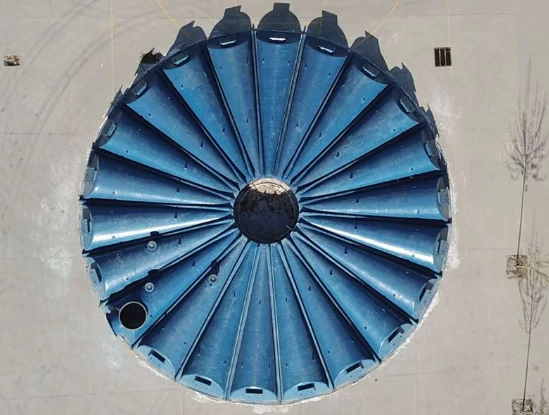
-
 Afrikaans
Afrikaans -
 Albanian
Albanian -
 Amharic
Amharic -
 Arabic
Arabic -
 Armenian
Armenian -
 Azerbaijani
Azerbaijani -
 Basque
Basque -
 Belarusian
Belarusian -
 Bengali
Bengali -
 Bosnian
Bosnian -
 Bulgarian
Bulgarian -
 Catalan
Catalan -
 Cebuano
Cebuano -
 China
China -
 China (Taiwan)
China (Taiwan) -
 Corsican
Corsican -
 Croatian
Croatian -
 Czech
Czech -
 Danish
Danish -
 Dutch
Dutch -
 English
English -
 Esperanto
Esperanto -
 Estonian
Estonian -
 Finnish
Finnish -
 French
French -
 Frisian
Frisian -
 Galician
Galician -
 Georgian
Georgian -
 German
German -
 Greek
Greek -
 Gujarati
Gujarati -
 Haitian Creole
Haitian Creole -
 hausa
hausa -
 hawaiian
hawaiian -
 Hebrew
Hebrew -
 Hindi
Hindi -
 Miao
Miao -
 Hungarian
Hungarian -
 Icelandic
Icelandic -
 igbo
igbo -
 Indonesian
Indonesian -
 irish
irish -
 Italian
Italian -
 Japanese
Japanese -
 Javanese
Javanese -
 Kannada
Kannada -
 kazakh
kazakh -
 Khmer
Khmer -
 Rwandese
Rwandese -
 Korean
Korean -
 Kurdish
Kurdish -
 Kyrgyz
Kyrgyz -
 Lao
Lao -
 Latin
Latin -
 Latvian
Latvian -
 Lithuanian
Lithuanian -
 Luxembourgish
Luxembourgish -
 Macedonian
Macedonian -
 Malgashi
Malgashi -
 Malay
Malay -
 Malayalam
Malayalam -
 Maltese
Maltese -
 Maori
Maori -
 Marathi
Marathi -
 Mongolian
Mongolian -
 Myanmar
Myanmar -
 Nepali
Nepali -
 Norwegian
Norwegian -
 Norwegian
Norwegian -
 Occitan
Occitan -
 Pashto
Pashto -
 Persian
Persian -
 Polish
Polish -
 Portuguese
Portuguese -
 Punjabi
Punjabi -
 Romanian
Romanian -
 Russian
Russian -
 Samoan
Samoan -
 Scottish Gaelic
Scottish Gaelic -
 Serbian
Serbian -
 Sesotho
Sesotho -
 Shona
Shona -
 Sindhi
Sindhi -
 Sinhala
Sinhala -
 Slovak
Slovak -
 Slovenian
Slovenian -
 Somali
Somali -
 Spanish
Spanish -
 Sundanese
Sundanese -
 Swahili
Swahili -
 Swedish
Swedish -
 Tagalog
Tagalog -
 Tajik
Tajik -
 Tamil
Tamil -
 Tatar
Tatar -
 Telugu
Telugu -
 Thai
Thai -
 Turkish
Turkish -
 Turkmen
Turkmen -
 Ukrainian
Ukrainian -
 Urdu
Urdu -
 Uighur
Uighur -
 Uzbek
Uzbek -
 Vietnamese
Vietnamese -
 Welsh
Welsh -
 Bantu
Bantu -
 Yiddish
Yiddish -
 Yoruba
Yoruba -
 Zulu
Zulu
Innovative Fiberglass Solutions for Enhanced Sewage Treatment Efficiency and Durability
Sewage Treatment and the Role of Fiberglass
Sewage treatment is a critical process in managing wastewater generated by homes, industries, and commercial establishments. As populations grow and urbanization intensifies, the strain on sewage treatment systems becomes more pronounced. In this context, innovative materials, such as fiberglass, have emerged as essential components in enhancing the efficacy, efficiency, and longevity of wastewater treatment facilities.
Sewage Treatment and the Role of Fiberglass
One of the primary applications of fiberglass in sewage treatment is in the construction of storage tanks and digesters. These tanks are essential for the preliminary stages of sewage processing, including sedimentation and anaerobic digestion. The non-corrosive nature of fiberglass ensures that these tanks can withstand the harsh environments and chemicals typically present in sewage, leading to reduced maintenance costs and improved operational reliability. Additionally, fiberglass tanks can be manufactured to unique specifications, enabling customized solutions for different treatment scenarios.
sewage treatment fiberglass

Furthermore, fiberglass is used in the creation of sewer pipes, clarifiers, and various components in treatment plants. The lightweight nature of fiberglass makes it easier and cheaper to transport and install compared to heavier materials. This can lead to reduced construction costs and shorter project timelines, which are critical factors in wastewater management, especially in rapidly urbanizing areas. Moreover, fiberglass pipes exhibit smooth interiors, which minimize friction and promote better flow rates, further enhancing the efficiency of the sewage system.
A significant advantage of using fiberglass in sewage treatment facilities is its ability to insulate against temperature fluctuations, which can be vital for specific processes like anaerobic digestion. Maintaining optimal temperatures helps to enhance the breakdown of organic materials, leading to more efficient biogas production and a reduction in the volume of sludge.
Moreover, the use of fiberglass aligns well with environmental sustainability efforts. It can be produced using recycled materials, and its durability reduces the need for frequent replacements, thus lowering the carbon footprint associated with material production and disposal. As the world grapples with climate change and seeks to implement sustainable development practices, incorporating fiberglass into sewage treatment processes presents a viable pathway toward improving environmental outcomes.
In summary, the integration of fiberglass into sewage treatment systems offers numerous advantages that enhance the effectiveness and sustainability of wastewater management. Its resistance to corrosion, lightweight nature, and customization capabilities make it an ideal choice for constructing storage tanks, pipes, and treatment components. As cities continue to expand and seek modern solutions to waste management challenges, the role of fiberglass in sewage treatment will undoubtedly grow, contributing to cleaner environments and healthier communities. The future of wastewater management lies not only in traditional engineering practices but also in the innovative use of advanced materials like fiberglass. Investing in these technologies will be crucial for creating resilient infrastructure that meets the demands of the 21st century.









